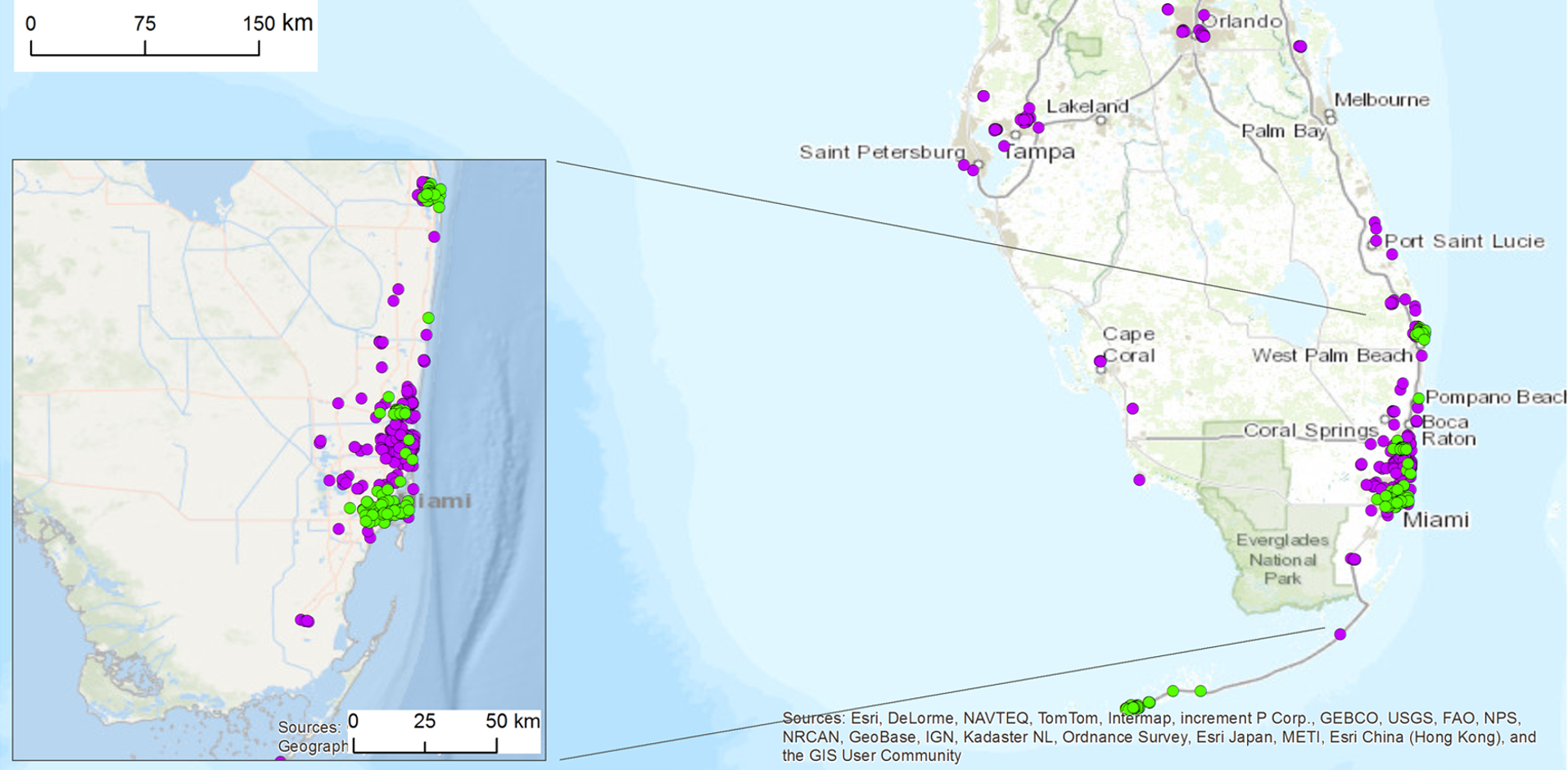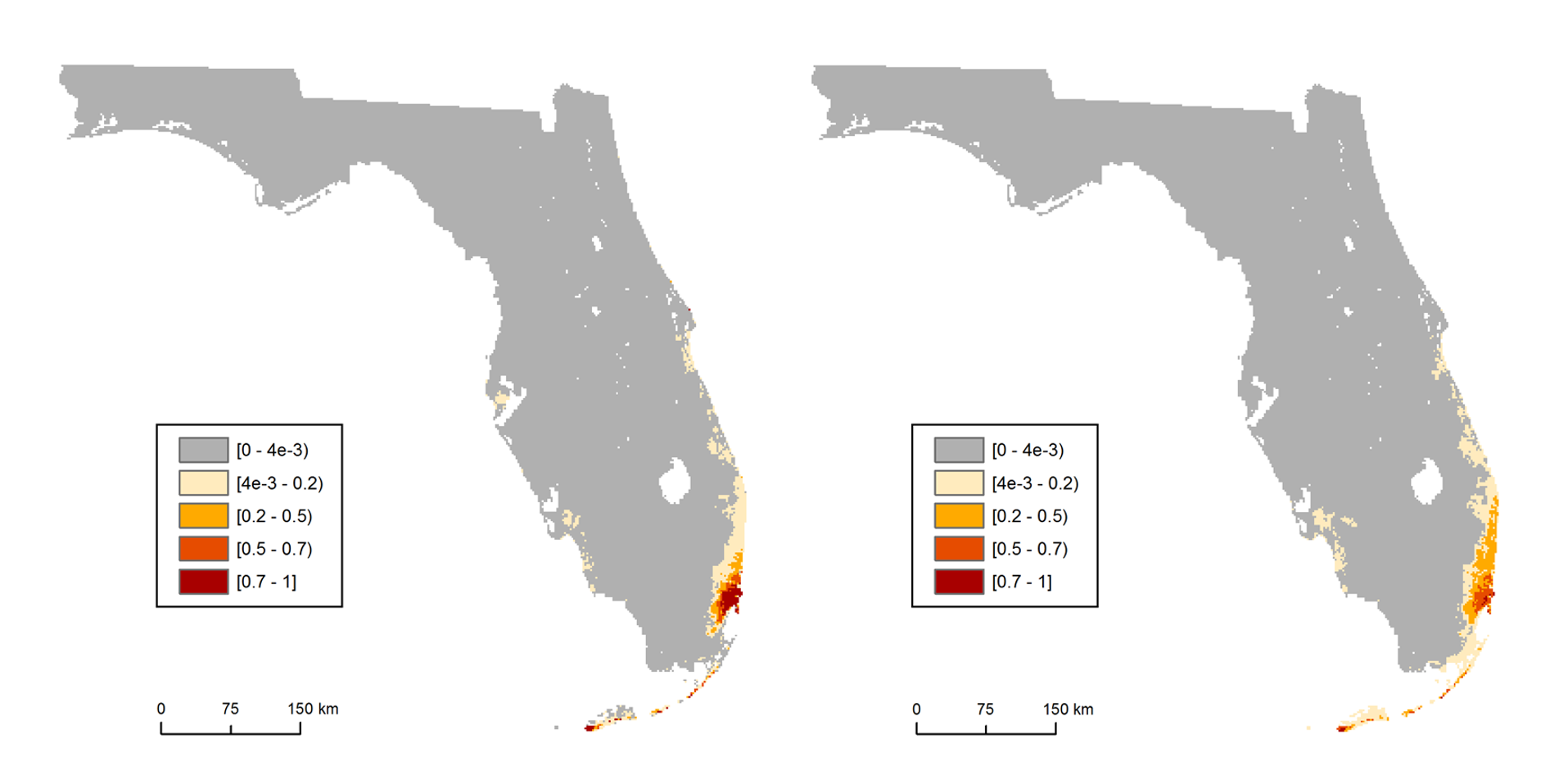Project Summary
Predicting the potential habitat of species under both current and future climate change scenarios is crucial for monitoring invasive species and understanding a species’ response to different environmental conditions. Frequently, the only data available on a species is the location of its occurrence (presence-only data). Using occurrence records only, two models were used to predict the geographical distribution of two destructive invasive termite species, Coptotermes gestroi (Wasmann) and Coptotermes formosanus Shiraki. The first model uses a Bayesian linear logistic regression approach adjusted for presence-only data while the second one is the widely used maximum entropy approach (Maxent). Results show that the predicted distributions of both C. gestroi and C. formosanus are strongly linked to urban development. The impact of future scenarios such as climate warming and population growth on the biotic distribution of both termite species was also assessed. Future climate warming seems to affect their projected probability of presence to a lesser extent than population growth. The Bayesian logistic approach outperformed Maxent consistently in all models according to evaluation criteria such as model sensitivity and ecological realism.
Objectives
- Predict the geographical distribution of invasive insect species using only occurrence records
- Predict the potential habitat under both current and future climate change scenarios
- Compare a Bayesian linear logistic regression approach adjusted for presence-only data against the maximum entropy approach (Maxent)
Technology
Project Website:
https://doi.org/10.1603/EN13312
Deployment Architecture:
Windows/Linux, ESRI ArcGIS, R
Language:
R, FORTRAN

